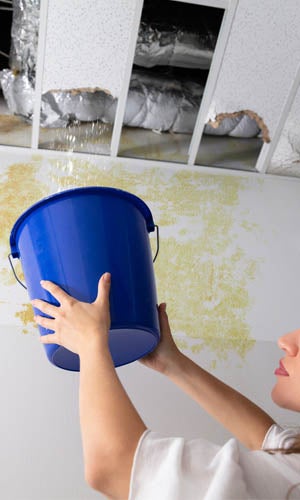Detect Hidden Water Line Leaks: Six Clever Hacks
Detect Hidden Water Line Leaks: Six Clever Hacks
Blog Article
Everybody will have their own individual assumption with regards to Finding hidden leaks.

Early detection of leaking water lines can alleviate a prospective disaster. Some small water leaks might not be visible.
1. Take A Look At the Water Meter
Every residence has a water meter. Checking it is a proven manner in which helps you uncover leakages. For beginners, switch off all the water sources. Ensure no one will flush, utilize the tap, shower, run the cleaning equipment or dishwasher. From there, go to the meter and watch if it will transform. Given that no person is utilizing it, there need to be no motions. If it moves, that shows a fast-moving leakage. If you detect no changes, wait a hr or two and check back once more. This suggests you may have a slow leak that could also be underground.
2. Inspect Water Consumption
If you detect abrupt changes, in spite of your consumption being the same, it means that you have leakages in your plumbing system. An abrupt spike in your costs shows a fast-moving leak.
On the other hand, a stable boost on a monthly basis, despite having the exact same behaviors, reveals you have a slow-moving leakage that's likewise slowly escalating. Call a plumber to thoroughly check your residential property, especially if you really feel a cozy area on your floor with piping underneath.
3. Do a Food Coloring Examination
When it concerns water usage, 30% originates from bathrooms. Test to see if they are running appropriately. Drop specks of food color in the container and wait 10 minutes. If the color in some way infiltrates your bowl during that time without flushing, there's a leak between the storage tank as well as bowl.
4. Asses Outside Lines
Don't fail to remember to check your outdoor water lines also. Examination faucets by affixing a garden pipe. Ought to water leak out of the link, you have a loose rubber gasket. Change this as well as guarantee all links are limited. If you've obtained a lawn sprinkler, it will certainly aid get it expertly checked out as well as kept every year. One tiny leak can squander lots of water and also increase your water expense.
5. Evaluate as well as Analyze the Scenario
House owners should make it a routine to examine under the sink counters as well as also inside cabinets for any type of bad odor or mold and mildew development. These 2 warnings indicate a leakage so prompt interest is called for. Doing regular assessments, even bi-annually, can conserve you from a significant issue.
If you know your residence is already old, keep a watchful eye on your heating systems, hoses, pipes etc. Look for stainings and also weakening as most pipelines as well as home appliances have a life expectancy. They will certainly additionally naturally deteriorate as a result of tear and also put on. If you presume leaking water lines in your plumbing system, do not await it to escalate. Call a specialist plumber as soon as possible so you do not end up with an awful mess in your house.
Early discovery of leaking water lines can minimize a possible catastrophe. Some little water leaks may not be noticeable. Examining it is a guaranteed method that aids you discover leakages. One tiny leak can waste tons of water and also surge your water expense.
If you think dripping water lines in your plumbing system, don't wait for it to rise.
WARNING SIGNS OF WATER LEAKAGE BEHIND THE WALL
PERSISTENT MUSTY ODORS
As water slowly drips from a leaky pipe inside the wall, flooring and sheetrock stay damp and develop an odor similar to wet cardboard. It generates a musty smell that can help you find hidden leaks.
MOLD IN UNUSUAL AREAS
Mold usually grows in wet areas like kitchens, baths and laundry rooms. If you spot the stuff on walls or baseboards in other rooms of the house, it’s a good indicator of undetected water leaks.
STAINS THAT GROW
When mold thrives around a leaky pipe, it sometimes takes hold on the inside surface of the affected wall. A growing stain on otherwise clean sheetrock is often your sign of a hidden plumbing problem.
PEELING OR BUBBLING WALLPAPER / PAINT
This clue is easy to miss in rooms that don’t get much use. When you see wallpaper separating along seams or paint bubbling or flaking off the wall, blame sheetrock that stays wet because of an undetected leak.
BUCKLED CEILINGS AND STAINED FLOORS
If ceilings or floors in bathrooms, kitchens or laundry areas develop structural problems, don’t rule out constant damp inside the walls. Wet sheetrock can affect adjacent framing, flooring and ceilings.
https://www.servicemasterbyzaba.com/blog/how-to-detect-water-leakage-in-walls/

We had been shown that write-up about Hacks to detect leaks through an acquaintance on another web address. For those who enjoyed our post if you please do not forget to pass it around. I take joy in reading our article about Hacks to detect leaks.
Get the right fix, call! Report this page